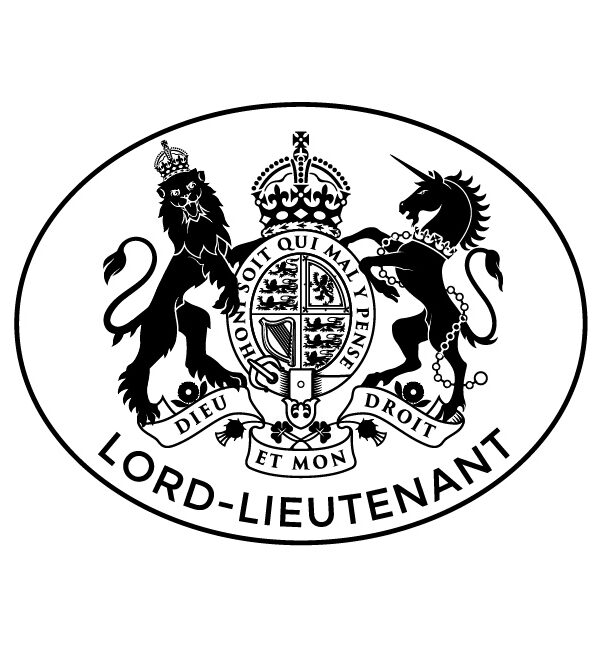Uniform, Badges and Etiquette
Uniform
The Lord-Lieutenant‘s attire, established in 1950, consists of a dark blue No. 1 dress, which closely resembles that of a Major-General in the Army. However, it is easily distinguishable by its unique cap badge, shoulder straps, and a silver and crimson sash. The ensemble includes a peaked forage cap with a scarlet band, a dark blue barathea jacket, and trousers adorned with scarlet stripes. In addition to the uniform the Lord-Lieutenant also carries a sword with a steel scabbard as part of their ceremonial regalia.
The badges on the uniform vary depending on the country represented: shamrock for Ireland, thistle for Scotland, rose for England, and the badge of the Heir Apparent for Wales.
Notably, for those who have had prior military service and held the rank of Colonel (or equivalent) or above in the Navy, Army, or Air Force may choose to wear their service’s uniform.
For female Lord-Lieutenants, there is now a designated uniform available.
Those who previously served in any of the Services have the option to wear the uniform of the rank and service in which they last served, adding a touch of personal distinction to their attire.
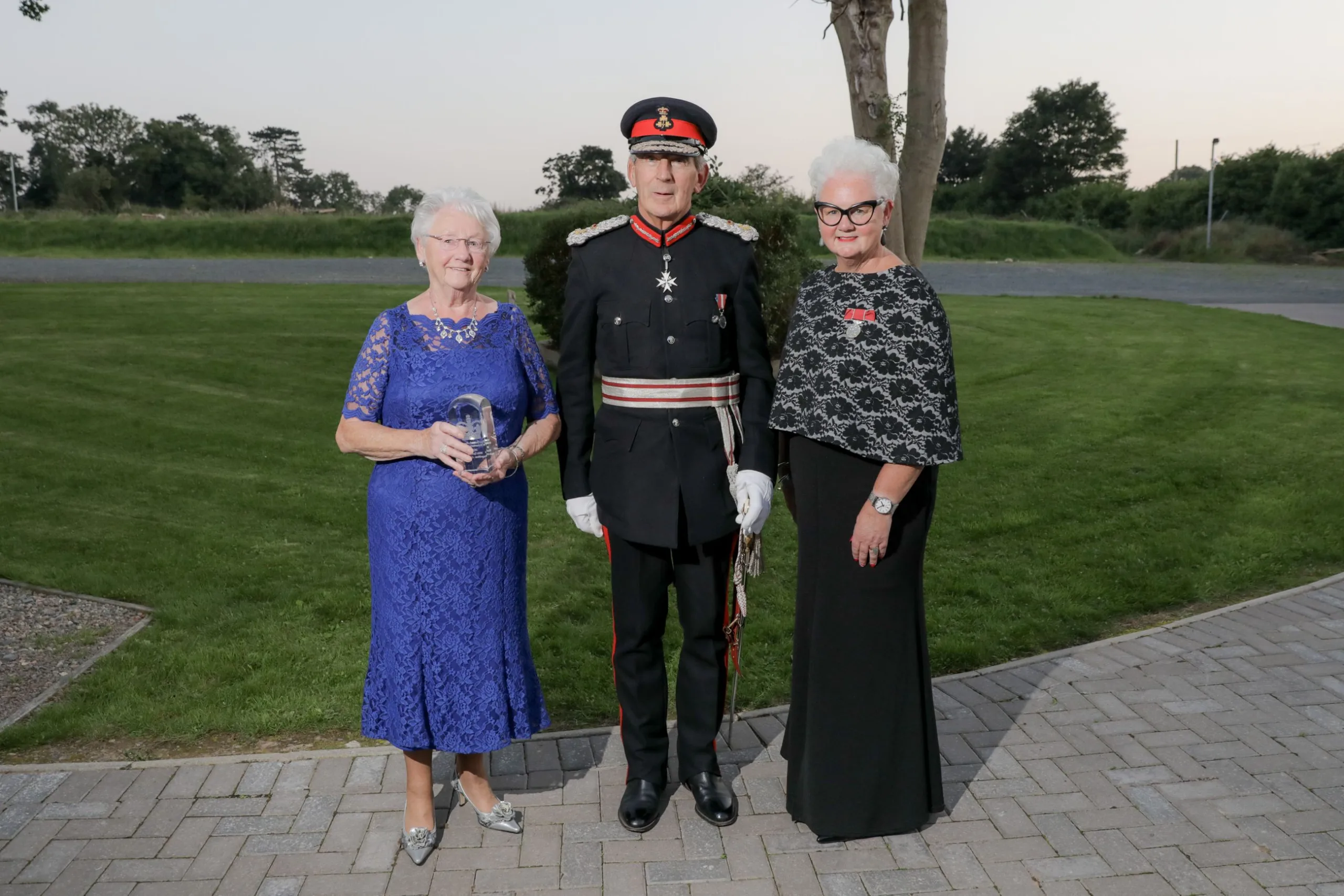
Former Lord-Lieutenant Mr David Lindsay in uniform presenting a Queens Award for Voluntary Services award to Via Wings, Dromore
Badges
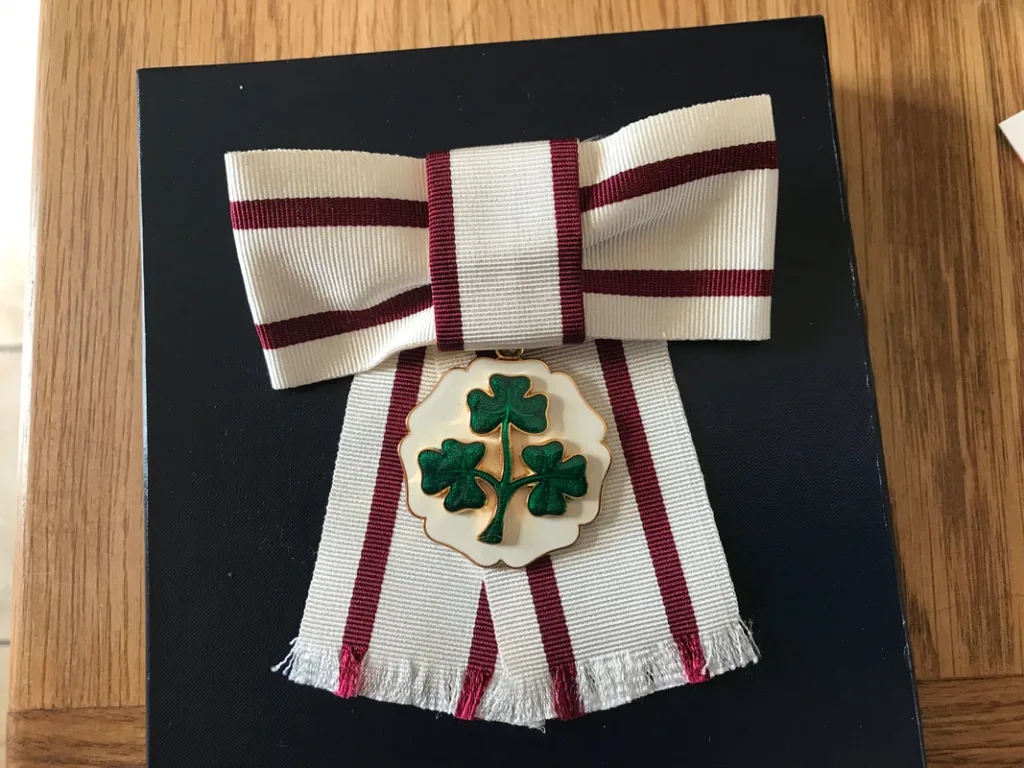
Vice Lord-Lieutenant Badge
Lady Vice Lord-Lieutenants wear a similar badge to that worn by lady Lord-Lieutenants.
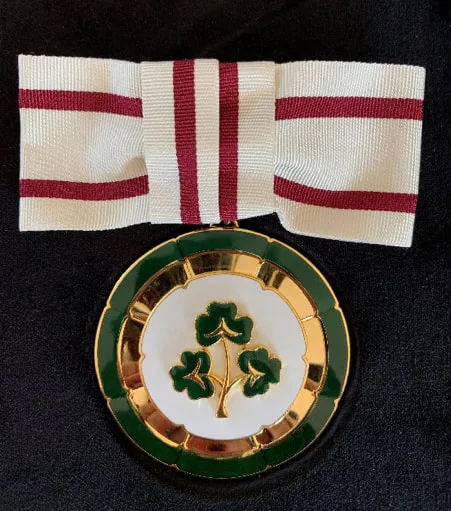
Lady Deputy Lieutenant Badge
When fulfilling duties as representatives of the Lord-Lieutenant, a lady Deputy Lieutenant (DL) wears a badge, positioned on a Court Bow, as shown in the image provided. This Court Bow, complemented by the badge, serves as the distinctive and formal symbol of their position during official engagements and events.
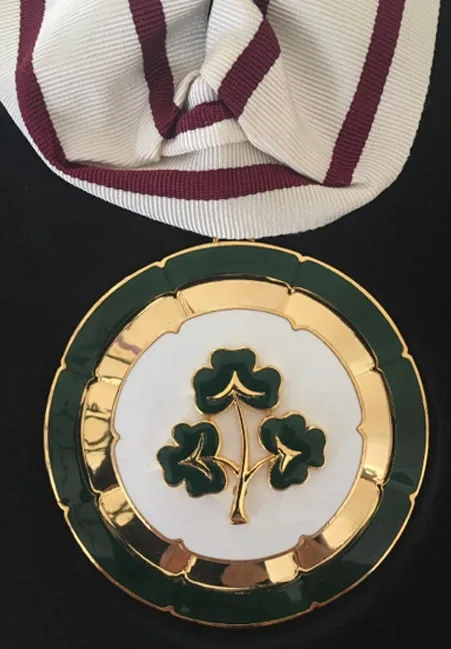
Male Deputy Lieutenant Badge
When a male Deputy Lieutenant (DL) represents the Lord-Lieutenant while in plain clothes, he wears a neck badge.
Although there is a uniform available for DLs, it is seldom used in modern times, with the badge being the preferred option. Notably, the Irish DL badge stands out due to the presence of shamrocks, as shown in the provided images.
Etiquette
The Lord-Lieutenant is The King’s personal representative in County Down. There is detailed written guidance available to hosts planning a visit from the Lord-Lieutenant or his representative.
Please Contact the Lieutenancy here for advice and information.
Where the Lord-Lieutenant is unable to attend he may be represented by his Vice Lord-Lieutenant or a Deputy Lieutenant, where the same protocols and order of precedence should be followed.
- His Majesty’s Lord-Lieutenant of the County and their spouse.
- Officers of State, such as the Prime Minister, Secretary of State or Minister of State for Northern Ireland, First Minister, Deputy First Minister, and Executive Ministers.
- The High Sheriff of the County.
- The Lord Mayor (if applicable) or the elected Mayor.
- The Deputy Mayor.
- Chief Executive of the Council.
- Members of Parliament (MPs).
- Aldermen.
- Councillors.
- Justices of the Peace (where appropriate).
- The Chief Constable.
- Written: Gawn Rowan Hamilton Esq., His Majesty’s Lord-Lieutenant of County Down (can be abbreviated on envelopes to HM Lord-Lieutenant of County Down).
- Invitations: The Lord-Lieutenant of County Down (and Mrs. Rowan Hamilton, if a joint invitation).
- Salutation: Dear Lord-Lieutenant or Dear Mr. Rowan Hamilton.
- In a speech preamble: “My Lord-Lieutenant.”
- Conversation (on formal occasions): “Lord-Lieutenant” or “Mr. Rowan Hamilton”
